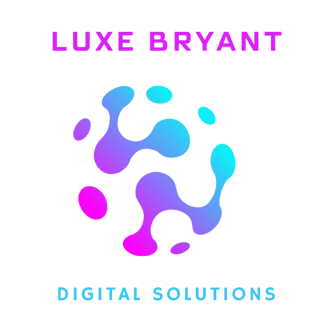A Professional Business Website: The Key to Success
A professional business website is more than just an online presence—it’s a powerful marketing tool that works 24/7 to attract leads, provide information, and generate sales. Below, we break down the key elements that make a website effective, ensuring it stands out in a crowded online space and delivers tangible results for your business.
Greg.Digital
3/19/20254 min read
A Professional Business Website: The Key to Success
Your website serves as the digital face of your business. In today’s highly competitive digital marketplace, your website is often the first impression potential clients or customers have of your brand. A well-designed, functional, and professional website is essential for building trust, engaging visitors, and converting them into loyal customers.
A professional business website is more than just an online presence—it’s a powerful marketing tool that works 24/7 to attract leads, provide information, and generate sales. Below, we break down the key elements that make a website effective, ensuring it stands out in a crowded online space and delivers tangible results for your business.
1. Mobile Responsiveness: Capturing a Mobile-First Audience
With more than half of web traffic coming from mobile devices, a website that isn’t mobile-optimized is losing a significant portion of potential customers. Mobile responsiveness means your website adjusts seamlessly across different screen sizes, ensuring a smooth and intuitive experience for all users.
Why It Matters:
Google prioritizes mobile-friendly websites in search rankings, improving visibility.
Users expect a flawless experience across all devices, and a non-responsive site can lead to high bounce rates.
A mobile-optimized website increases conversions, as visitors can easily browse, shop, and interact on their smartphones.
How to Achieve It:
Use a responsive web design framework (such as Bootstrap or CSS Grid).
Test your site using Google's Mobile-Friendly Test tool.
Ensure buttons, text, and images are appropriately scaled for smaller screens.
2. Clear and Concise Navigation: Enhancing Usability
Navigation is one of the most critical aspects of website usability. If visitors cannot find what they are looking for quickly, they will leave and likely never return. Your website should have a logical, easy-to-use navigation structure that guides users effortlessly to the information they need.
Best Practices for Navigation:
Keep the navigation bar simple with 5-7 primary menu items.
Use descriptive labels such as "Services," "Products," "About Us," and "Contact."
Implement a search function for quick content discovery.
Ensure the menu is accessible from both desktop and mobile devices.
3. Fast Load Speeds: Keeping Visitors Engaged
In the digital age, speed is everything. Studies show that if a website takes longer than three seconds to load, over 40% of users will abandon it. A slow website not only affects user experience but also impacts search engine rankings, reducing your visibility online.
Factors Affecting Load Speed:
Large, unoptimized images
Excessive plugins and scripts
Poor-quality hosting services
Unnecessary code bloat
Ways to Improve Website Speed:
Optimize images using compression tools like TinyPNG.
Minimize the use of heavy plugins and scripts.
Choose a high-performance hosting provider.
Implement caching and content delivery networks (CDNs).
4. Strong Calls to Action (CTAs): Driving Conversions
Your website should guide visitors toward a specific action, whether it’s booking a consultation, signing up for a newsletter, or making a purchase. Clear and compelling CTAs encourage visitors to take the next step.
Best Practices for Effective CTAs:
Use action-oriented language like "Get Started," "Sign Up Now," or "Request a Quote."
Place CTAs strategically—above the fold, at the end of blog posts, and in sidebars.
Make buttons stand out with contrasting colors and engaging text.
Reduce friction by simplifying sign-up or purchase forms.
5. High-Quality Content: Educating and Engaging Your Audience
Content is king, and high-quality content keeps visitors engaged, builds trust, and positions you as an authority in your industry. Whether it’s blog posts, case studies, videos, or service descriptions, compelling content helps improve SEO and user experience.
Types of Valuable Content:
Informative blog posts and guides that answer common customer questions.
Testimonials and case studies that highlight success stories.
Engaging videos and infographics that simplify complex topics.
FAQ sections to address common concerns upfront.
6. SEO Optimization: Improving Visibility and Reach
A beautiful website is meaningless if no one can find it. Search Engine Optimization (SEO) ensures your website ranks higher on search engines, driving organic traffic and increasing visibility.
Key SEO Elements:
Keyword research and implementation in content, titles, and meta descriptions.
Optimized URLs that are short and descriptive.
High-quality backlinks to improve domain authority.
Regular content updates to keep the site relevant and fresh.
7. Branding and Aesthetics: Building a Strong Identity
Your website should reflect your brand identity through consistent colors, fonts, and imagery. A strong brand presence creates a professional and trustworthy impression.
Essential Branding Elements:
A recognizable logo placed prominently.
A color scheme that aligns with your brand personality.
Consistent typography for readability and style.
Professional, high-quality images that enhance visual appeal.
8. Security and Compliance: Protecting Data and Trust
Cybersecurity threats are a growing concern, and ensuring your website is secure is crucial for protecting user data and maintaining credibility.
Security Measures:
SSL certificates to encrypt user data.
Regular software updates and security patches.
Strong password policies and authentication methods.
Compliance with GDPR, CCPA, or other relevant regulations.
9. Analytics and Performance Tracking: Measuring Success
Understanding how users interact with your website helps refine your strategies and improve performance over time. Tracking analytics provides insights into what’s working and what needs improvement.
Tools for Analytics:
Google Analytics for traffic and behavior analysis.
Heatmaps (like Hotjar) to see where users are clicking.
Conversion tracking to measure goal completions.
A/B testing for optimizing design and content decisions.
Conclusion: Elevate Your Business with a Professional Website
A professional, clean, and modern website enhances credibility, improves user experience, and helps convert visitors into paying customers. Whether you are a small business, a startup, or an established enterprise, investing in a high-quality website is one of the most important decisions you can make for your brand’s success.
By implementing mobile responsiveness, clear navigation, fast load speeds, strong CTAs, and SEO optimization, your website can become a powerful tool for growth and profitability. Don’t just create a website—build an online presence that stands out and drives real business results.
Solutions
Innovative web development and AI automation services.
Connect
Greg@LuxeBryant.com
© 2025. All rights reserved.


561-600-0016
